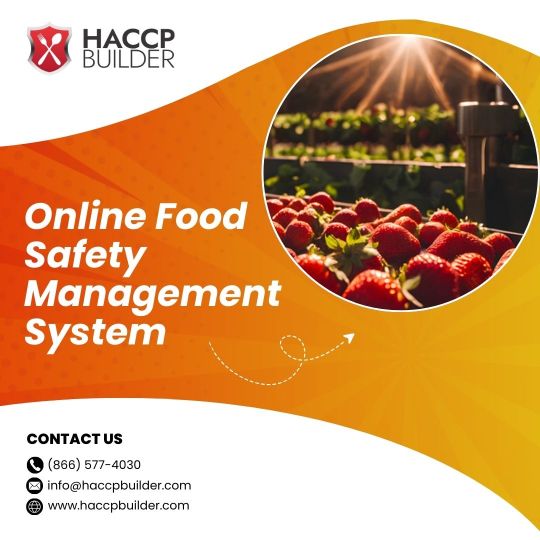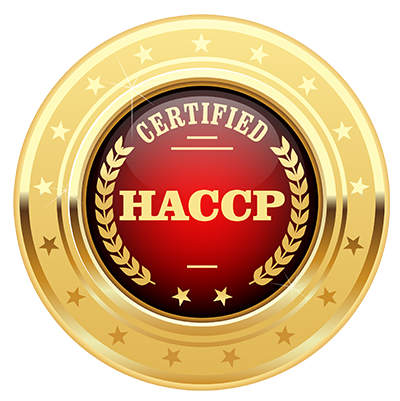HACCP Builder is a United States Company. Our focus is on helping all aspects of our constituency – that includes our clients, client customers and the regulatory bodies.
Don't wanna be here? Send us removal request.
Text
Mastering Food Safety: A Guide to Creating an Effective HACCP Plan for Food Products
HACCP Builder was created to help food producers of all sizes achieve top food safety standards. We see many businesses need help with their HACCP plan for food products.
Click here to read more: https://penzu.com/public/a7b2c66341359681
0 notes
Text
Comprehensive Guide to Implementing a HACCP Plan for the Food Industry
In the highly regulated and safety-conscious food industry, ensuring that food products are safe for consumption is critical.HACCP is the most effective plan for the delivery of this food safety. It is an extensive procedure, which involves identification, evaluation, and management of risks associated with matters of food safety. Control is one of the elements of HACCP and monitoring has to be implemented to establish that the HACCP plan for food industry is effective.

Understanding the HACCP management system
HACCP is formally defined as a system that focuses on food safety from the point of production throughout the distribution and preparation chains i.e., HACCP is a system that focuses on crucial food safety risk factors. Starting in the early 1960s for the particular purpose of space food for NASA, has in the current world turned to be universal for food processing. This approach differs from the classic approach of safety management by using end-product safety testing.
Create a HACCP Plan for the Food Industry
A HACCP plan is created through a series of processes that explain the best strategies for hazard assessment. Below is a breakdown of how to create an operational HACCP plan for food industry:
1. Assemble the HACCP Team: The first procedure formulated for the development of HACCP is the assembly of a team of employees who will have sufficient knowledge of food safety and the production process.
2. Detail of product: The following phase is to fully specify the product's specifications, including the ingredients to be utilized, how the product will be produced, packed, and stored, and through which channel the product will be marketed. This description helps in recognizing risks at every step of the manufacturing process.
3. Determine the Intended Use and Consumers: Understanding the product's intended purpose and the target audience is critical for identifying possible risks. For example, products that appeal to sensitive groups such as children or the elderly have to be tested and pass some rigorous safety regulations.
4. Construct a Flow Diagram: It can also be described as a flowchart that provides a visual process of how production is done in stages beginning with a particular stage to the last stage. It covers all the processes that are undergone through the manufacturing process from purchasing raw materials to the final product. This diagram here can be used as a tool for being CCPs, that is, it is used to come up with strategic control points.
5. Conduct a Hazard Analysis: Risk evaluation is a process of assessing threats that may occur at different production phases.
7. Establish Critical Limits: For each CCP, the team must establish critical limits that define the boundaries of safe operation. Critical limits are based on scientific data and regulatory standards and are used to determine whether a CCP is under control.
8. Develop Monitoring Procedures: Monitoring using a HACCP monitoring system is crucial to check that each CCP is operating within the critical limits. The main purpose of monitoring is to observe the control measures frequently or make periodic checks to ensure that they work appropriately.
10. Verification Procedures: Verification processes are useful in establishing that the HACCP plan is working optimally. Some of the activities include; The examination of monitoring records, verification exercises, audits, and trials undertaken to ascertain that the control measures are working as expected.
The Role of HACCP Monitoring Systems
A HACCP Monitoring System is a crucial component of the execution of a HACCP plan. Consequently, more sophisticated monitoring systems relay information touching on the precise control points in real-time hence identifying potential threats quickly. These systems may comprise temperature probes, pH electrodes, and other automated measuring instruments that regularly record and report the values of the critical factors to people.

Conclusion
Evaluating and developing a HACCP plan for food industry is mandated for food safety and regulatory compliance. In this way, potential hazards are determined and eliminated or controlled, and this is how businesses can help safeguard the health of the public, improve the quality of products, and increase the demand for the product.
0 notes
Text

HACCP Builder offers an online Food Safety Management System designed to simplify compliance with food safety regulations and HACCP guidelines.
#online Food Safety Management System#best food traceability software#haccp food management system#haccp based food safety program#haccp plan for food products#haccp plan for food industry
0 notes
Text
Food Manufacturing Traceability Software
HACCP Builder's food manufacturing traceability software ensures compliance with food safety regulations by tracking ingredients and finished products throughout the production process. It streamlines record-keeping, enhances transparency, and enables quick identification and resolution of potential safety issues, ensuring product integrity and consumer trust.

#traceability software food industry#best food traceability software#traceability software for food manufacturing#food manufacturing traceability software#food traceability software
0 notes
Text
HACCP Monitoring System: The Seven Steps of HACCP for Food Safety
In the realm of food safety, the Hazard Analysis Critical Control Point (HACCP) system stands as a cornerstone, ensuring that food is handled, prepared, and stored in a manner that minimizes the risk of foodborne illness. Developed initially for NASA in the 1960s to guarantee the safety of space food, HACCP has since become a globally recognized framework essential to food industry standards. Central is a HACCP monitoring system delivering re its seven fundamental principles, which collectively form a systematic approach to identifying and controlling potential hazards throughout the food production process.

Hazard Analysis The first step in implementing HACCP involves conducting a thorough hazard analysis of the food production process. This entails developing a HACCP plan for food products identifying any biological, chemical, or physical hazards that could occur at each stage from raw materials through to consumption. Hazards might include microbial contamination, presence of allergens, chemical residues, or physical hazards such as foreign objects.
Identify Critical Control Points (CCPs)
Critical Control Points (CCPs) are specific points in the production process where control measures can be applied to prevent, eliminate, or reduce identified hazards to an acceptable level. These points are critical because failure to control them could result in an unacceptable food safety risk. Examples of CCPs include cooking, chilling, packaging, and storage.
Establish Critical Limits
At each CCP, critical limits must be established. These are criteria that define the boundaries within which a process must operate to ensure food safety. Critical limits are typically based on regulatory standards, scientific evidence, or guidelines provided by relevant authorities. For instance, a critical limit for cooking temperature might be set at 165°F (74°C) for poultry to ensure the destruction of harmful bacteria like Salmonella.
Establish Monitoring Procedures
Monitoring procedures are put in place to assess whether CCPs are operating within the established critical limits. This involves regular observation, measurement, or testing of parameters relevant to food safety at each CCP. Monitoring ensures that deviations from critical limits are detected promptly, allowing corrective actions to be taken before unsafe food reaches consumers.
Establish Corrective Actions
Despite rigorous monitoring, deviations from critical limits may occasionally occur. When this happens, predefined corrective actions must be implemented immediately to bring the process back under control and prevent unsafe food from being released. Corrective actions should address the cause of the deviation, restore process integrity, and verify that the CCP is once again operating within the critical limits.
Establish Verification Procedures Verification procedures are designed to confirm that the HACCP system is functioning effectively. This involves validating that the HACCP plan is scientifically and technically sound, verifying that monitoring and corrective actions are being carried out as planned, and reviewing records to ensure compliance. Regular audits, reviews, and testing are essential components of verification to maintain the integrity of the food safety system.
Establish Record-Keeping and Documentation
Accurate record-keeping is crucial to the successful implementation of HACCP. Records document the entire HACCP process, including hazard analysis, CCPs, critical limits, monitoring results, corrective actions taken, verification activities, and any relevant documentation. These records serve as evidence of due diligence and provide traceability in the event of an inspection, audit, or foodborne illness outbreak investigation.

So, you can get access to implement HACCP monitoring system, so it is time you start your search for the best services possible. There are multiple ways; you can take suggestions from experienced people, check information online, or follow the mentioned links. Those who have any questions, please feel free to reach out.
Conclusion
The HACCP monitoring system cloud solution has taken over the industry by providing the best assessment of food safety plans and ongoing compliance. According to a recent report, the number of clients who consider HACCP increases by 9% every year. I hope this post has narrated to you the foremost principles of HACCP. In order to connect with the best HACCP plan software, follow the mentioned links.
#haccp food management system#haccp based food safety program#haccp food production#haccp software#food safety plan builder#haccp plan for food products
0 notes
Text

HACCP Builder is a United States Company. Our focus is on helping all aspects of our constituency – that includes our clients, client customers and the regulatory bodies.
#HACCP Food Management System#haccp food safety system#haccp plan for food products#haccp based food safety program
0 notes
Text
Online Food Safety Management System | HACCP Builder
An Online Food Safety Management System, streamlines the creation, implementation, and monitoring of HACCP plans, ensuring compliance with food safety regulations by identifying hazards, setting critical control points, and maintaining detailed records digitally.

#haccp monitoring system#haccp food management system#food safety management program#food safety management solutions#food safety management system#online food safety management system
1 note
·
View note